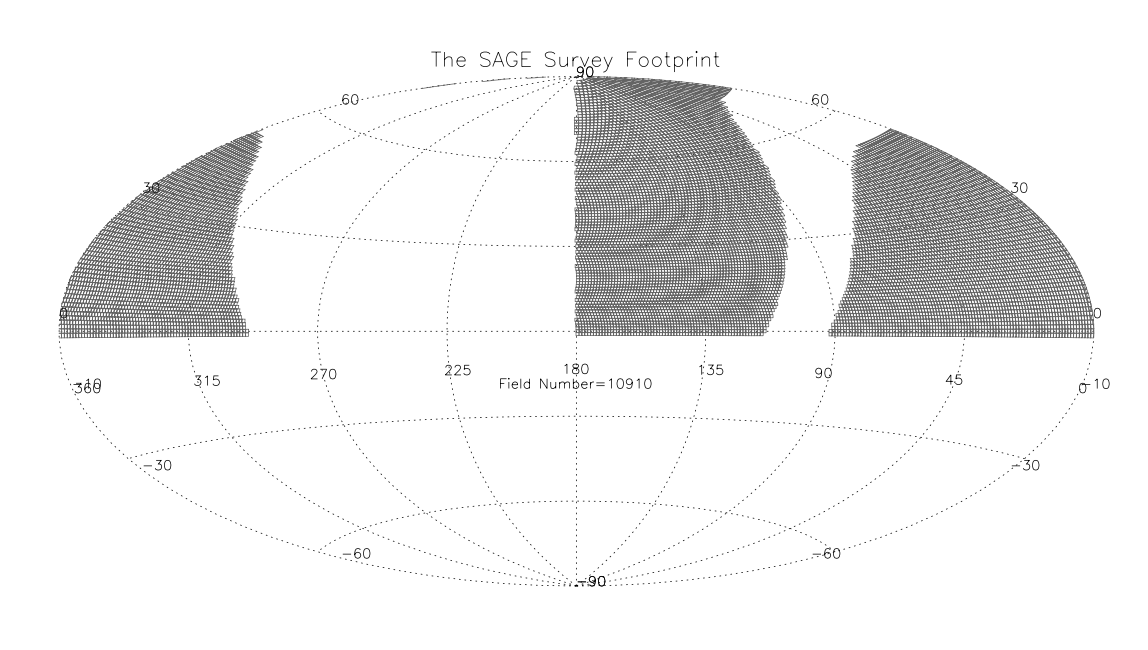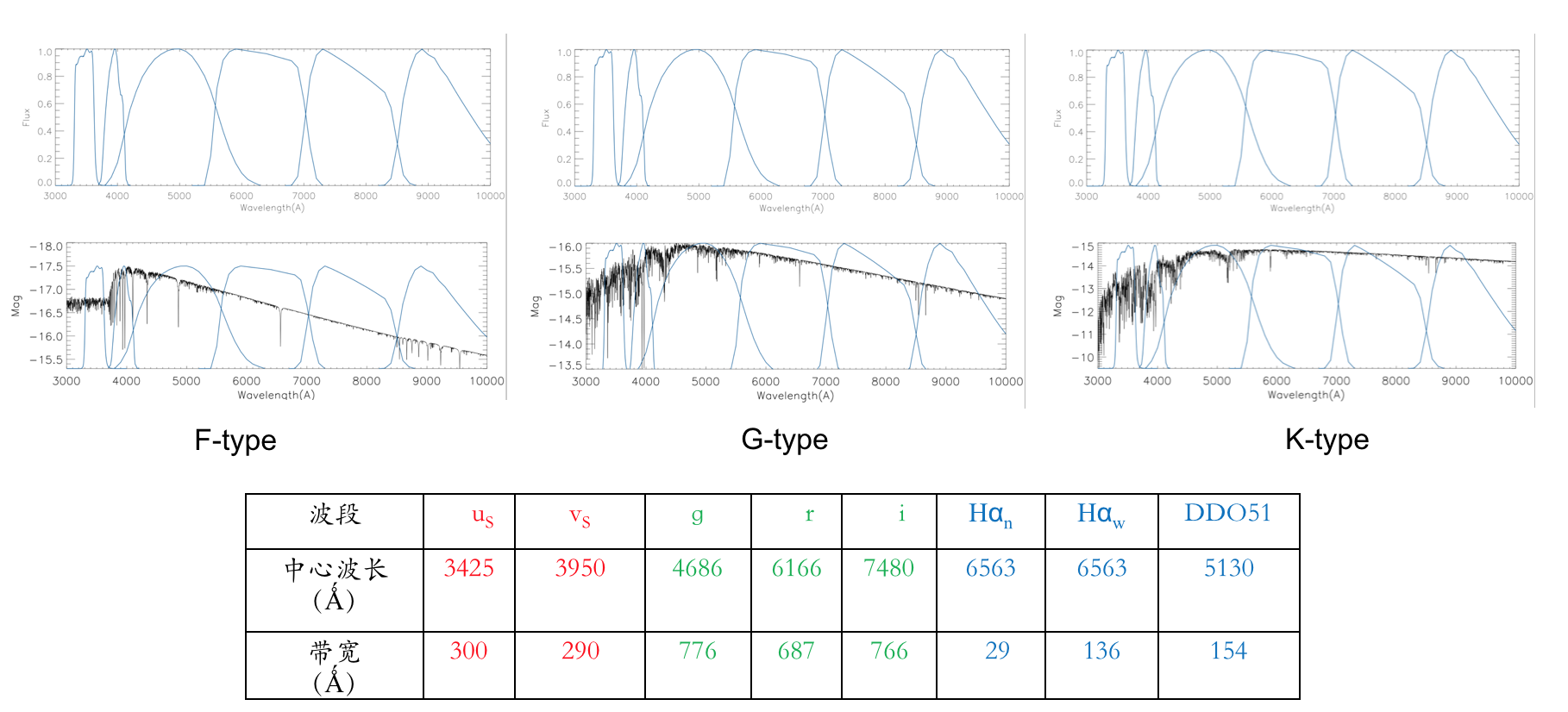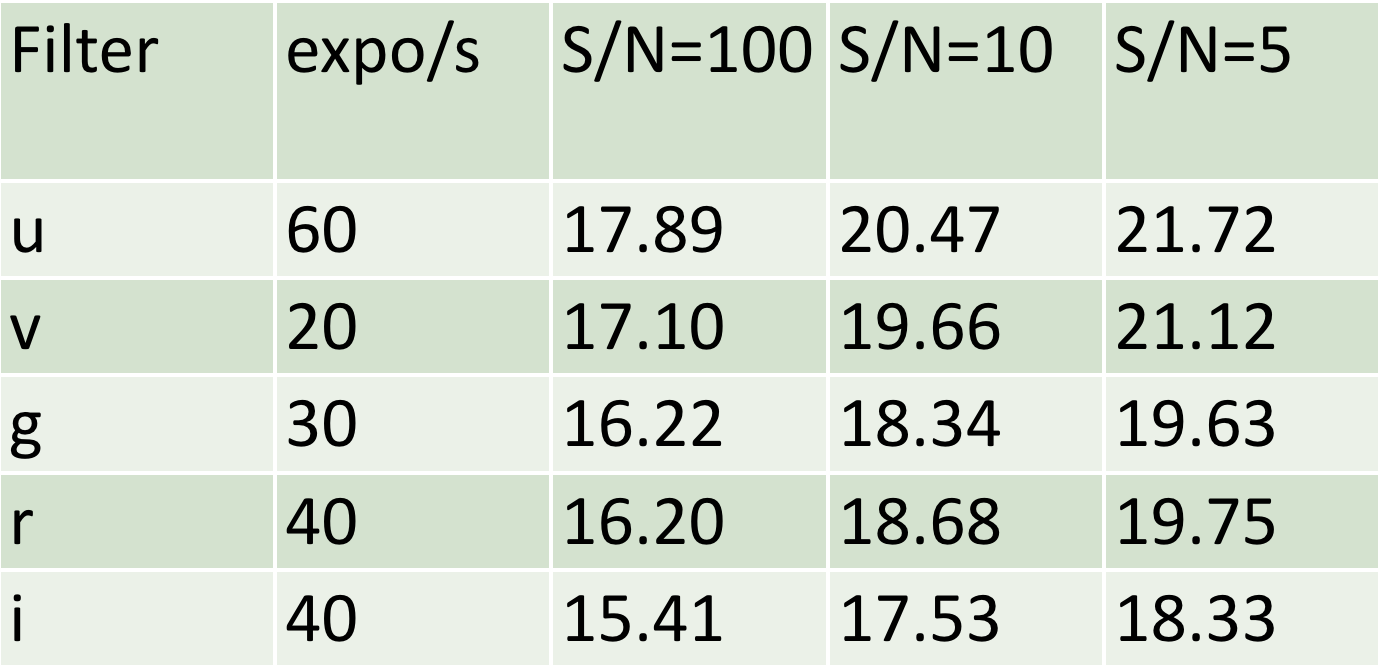Introduction
The Stromgren-Crawford (SC) intermediate-band photometric system was invoked in the 1960s, and was originally designed to study early-type stars. After almost three decades of development, this system has been proven to be extremely powerful in the study of atmospheric parameters of various types of stars. The parameters like effective temperature Teff, gravity log g and metallicity [Fe/H], yielded from the SC system is more efficient and accurate than those from widely-used broad band photometric system or low-resolution spectra, and even comparable to those from high-resolution spectra. This system is also useful for the determination of extinctions, stellar distances, radii, and stellar evolutionary phases. However, due to the limitation of the previous instruments and facilities, the existing stellar-parameters sky survey, such as the Geneva-Copenhagen survey (Nordström et al. 200, GCS) and Hauk & Mermilliod 1998 (HM) survey, the limiting magnitude is ~8.5 mag in V-band, mainly for the stars in the solar neighborhood 40pc.
For this reason, we propose a northern deep sky survey in the SAGE photometry system, for which the limiting magnitude is extended to ~15 mag in V-band (100 sigma), in the solar neighborhood 1 kpc.
 Figure 1. The footprint of the SAGE survey is ~12,000 deg2 for the north sky Dec>-5 deg, RA <12 h and RA>18 h, b>10 deg and b<-10 deg.
Figure 1. The footprint of the SAGE survey is ~12,000 deg2 for the north sky Dec>-5 deg, RA <12 h and RA>18 h, b>10 deg and b<-10 deg.
The Photometric System
The SAGE survey adopts a unique photometric system, which consists of Stromgren-Crawford (SC) uSC, self-designed vSAGE, SDSS g/r/i,Hαn/Hαw and DDO51 bands. The telescopes used are Steward Bok 90-inch (2.3m) telescope, Nanshan 1-m wide-field telescope of XinJiang Astronomical Observatories of CAS and the Maidanak 1-m telescope of Uzbekistan. The survey has started since 2016 and it will last for ~3-5 years. The complete depth is >21 mag in u/v-band (5 sigma), and ~0.5 billion stars will be detected. The stellar parameters of the whole sample will be derived and a sample of extreme metal-poor stars ([Fe/H]<-5) will be discovered. The SAGE survey will not only provide accurate input catalogue for the LAMOST survey, but also provide the big data for the formation and evolution of the Milky Way, especially combined with the spatial and velocity information from LAMOST and the Gaia data.
 Table 1. SAGE photometric system and filter response functions
Table 1. SAGE photometric system and filter response functions
 Figure 2. The telescopes used for the observations of the SAGE Survey
Figure 2. The telescopes used for the observations of the SAGE Survey
The limiting magnitudes of SAGE survey in the signal-to-noise rarios of 100, 10 and 5 are shown in Table 2. It is noted that the limiting magnitudes in u/v bands could be deeper than 21 mag, which are the deepest in all the bands, as we mainly focus on the FGK stars.
 Table 2. The limiting magnitudes of the SAGE Survey for different S/N
Table 2. The limiting magnitudes of the SAGE Survey for different S/N
Science Goals
- Determine the foreground extinction of the all the stars, evolutionary stage, stellar atmosphere parameters, distances, etc with the 4 color indices.
- Search and identify the solar system nearby faint objects, including white dwarfs and brown dwarfs; determine the stellar mass function; solve the problems of the G-dwarfs, dark matter and local formation scales.
- The fine structure of the Milky Way, including dividing thin disk and thick disk, the nature and morphology, star streams, substructures and searching the dwarf galaxies which are falling into our Milky way.
- Searching for the extreme metal-poor stars (EMPs); stellar early-formation, nuclear fusion processes, stellar evolution.
- The metallicity of the Milky Way, including the radial or vertical distributions of the thin disk and thick disk; age metallicity relation (AMR); metallicity evolution.
- The Galactic open clusters and globular clusters, including the member star identification, foreground stars excluding, mass function, age, abundance, etc., the radial density distribution of stars with different mass; search the super massive stars, brown stars, even free planets.
- The nearby galaxies, including search and identify the giant broach stars in the dwarf galaxies and search the planetary nebular and then study the age metallicity relation (AMR), metallicity gradient and galaxy structures.
- Combining this photometry catalogue with the LAMOST spectroscopy survey and GAIA project data, the five-dimension of the Milky Way (R.A., Dec., distances, proper motion and radial velocities) can be determined.
The Survey Teams
- PI: Prof. Gang Zhao
- National Astronomical Observatories, Chinese Academy of Sciences, China (NAOC)
- Xinjiang Astronomical Observatories, Chinese Academy of Sciences, China (XAO)
- Ulugh Beg Astronomical Institutes, Uzbekistan (UBAI)
- Steward Observatory, University of Arizona, USA
Publication List
- [1] SAGE巡天介绍I: 测光系统和数据处理, 范舟等,天文学进展,2018年,02期,101
- [2] Toward Stellar Abundance and Galaxy Evolution Determinations, Ehgamberdiev et al. 2018
- [3] Modern astronomy at the Maidanak observatory in Uzbekistan, Ehgamberdiev, Shuhrat, 2018, NatAs, 2, 349
- [4] The introduction to the SAGE survey II: The data reduction pipeline introduction, Astronomical technology and method, Zheng et al. 2018
- [5]The SAGE Photometric Sky Survey: Technical Description, Zheng et al, 2018, RAA,18,147
- [6] SAGE巡天介绍 II:恒星大气参数估计, 赵景昆等,天文学进展,2020年,01期,60-68
- [7] The Test Area of the SAGE Survey: Zheng et al, 2019, RAA,19,3
- [8] Testing Deep Learning for deriving Stellar Atmospheric Parameters with the Extended MILES Library, Wang et al., 2019, PASP, 131, 084504
- [9] The Ages of M31 Star Clusters: Spectral Energy Distribution versus Color magnitude Diagram, Fan et al., 2018, AJ, 156, 191
- [10] Comparisons of Different Fitting Methods for the Physical Parameters of a Star Cluster Sample of M33 with Spectroscopy and Photometry, Fan et al. 2020, ApJS, 251, 13
- [11] Detecting the dark matter halos with star clusters in M31/M33 with PFS, SDSS-V and LAMOST, Fan et al. 2020, IAUS, 351,105
- [12] The Stellar Abundances and Galactic Evolution Survey: Photonic Passbands and Extinction Coefficients for the u and v Bands, Tan et al. 2022, RAA, 22, 5004
- [13] The Stellar Abundances and Galactic Evolution Survey (SAGES) I. General Description and the First Data Release (DR1) by Fan et al. 2023 ApJS in press, 2023arXiv230615611F.
- [14] Beyond spectroscopy. II. Stellar parameters for over twenty million stars in the northern sky from SAGES DR1 and Gaia DR3, Huang et al. 2023, ApJ in press, 2023arXiv230704469H
- [15] Photometric calibration of the Stellar Abundance and Galactic Evolution Survey (SAGES): Nanshan One-meter Wide-field Telescope g, r, and i band imaging data, Xiao et al. 2023, Chinese Science Bulletin, 2023arXiv230713238X
- [16] The Stellar Abundances and Galactic Evolution Survey(SAGES)----II. stellar atmospheric parameters for a half million red giant star a half million, Sun et al. 2023, RAA submitted
- [17] The Stellar Abundances and Galactic Evolution Survey (SAGES) III – Nanshan gri-band Data Release, Li et al. 2023, in preparation
- [18] SAGES: STELLAR PARAMETERS FOR 15 MILLION STARS FROM DR1, Gu et al. 2023, in preparation
- [19] Candidate Stellar Members of the VMP/EMP Disk System of the Galaxy from the SkyMapper and SAGES Surveys, Hong et al. 2023, in preparation
- [20] 发明专利: 测量FGK型恒星金属丰度的方法及滤光片vSAGE(专利号 201810162482.9)
 Figure 1. The footprint of the SAGE survey is ~12,000 deg2 for the north sky Dec>-5 deg, RA <12 h and RA>18 h, b>10 deg and b<-10 deg.
Figure 1. The footprint of the SAGE survey is ~12,000 deg2 for the north sky Dec>-5 deg, RA <12 h and RA>18 h, b>10 deg and b<-10 deg. Table 1. SAGE photometric system and filter response functions
Table 1. SAGE photometric system and filter response functions Figure 2. The telescopes used for the observations of the SAGE Survey
Figure 2. The telescopes used for the observations of the SAGE Survey Table 2. The limiting magnitudes of the SAGE Survey for different S/N
Table 2. The limiting magnitudes of the SAGE Survey for different S/N